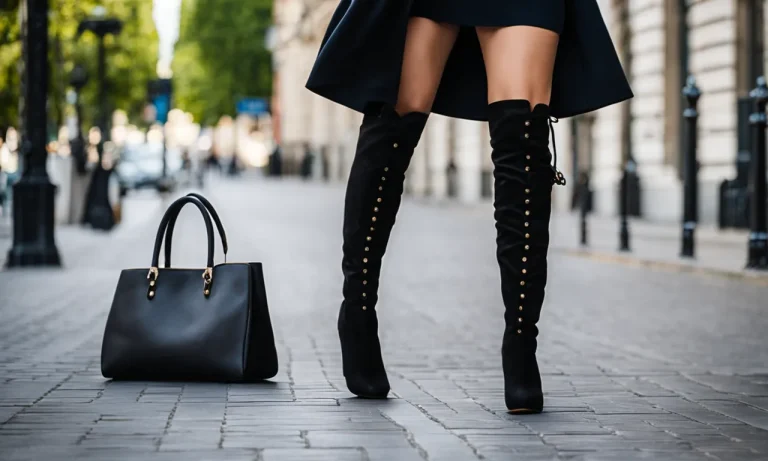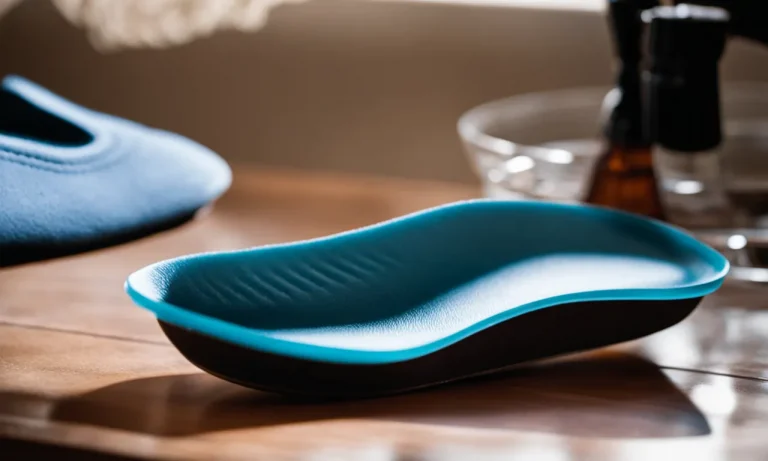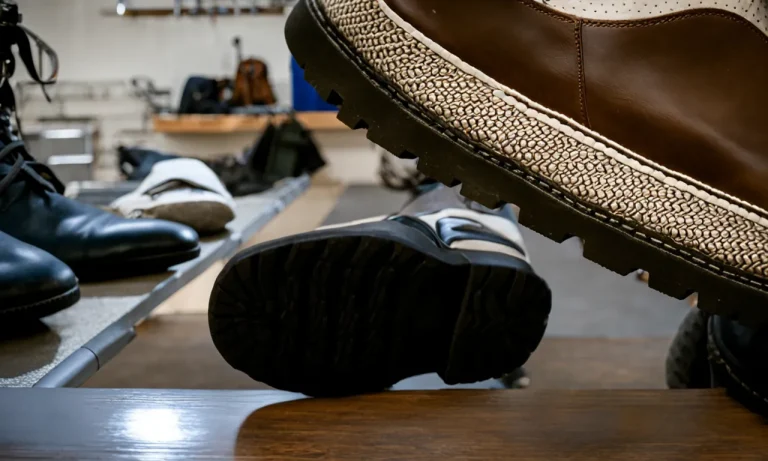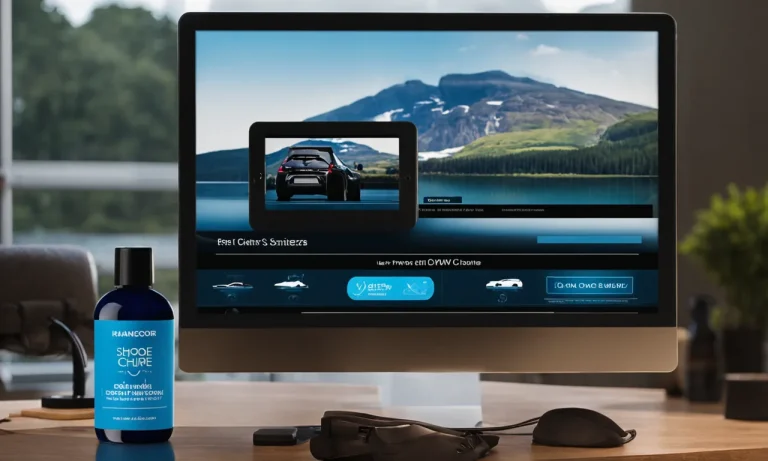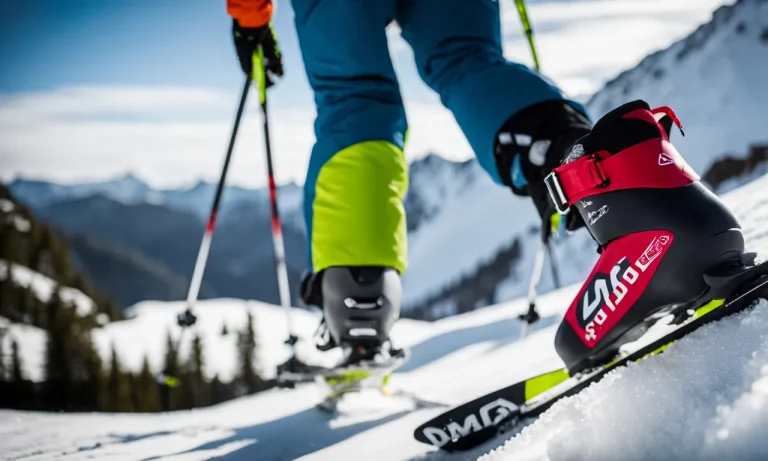Winter is here, which means it’s time to break out the boots, sweaters, and coats. But what about open toe shoes? Can you still wear your favorite sandals and peep toes when there’s snow on the ground? If you’re wondering whether open toe shoes are appropriate for winter, read on.
Here’s a quick answer before we dive in: You can still wear open toe shoes in winter if you choose the right materials, wear them with socks or tights, stick to indoor/warmer settings, and take precautions. That said, closed toe shoes are often the safer, warmer choice.
Consider the Type of Material
When deciding whether to wear open toe shoes in winter, it’s important to consider the type of material they are made from. Different materials offer varying levels of insulation and protection against the cold weather.
Leather or suede open toes: more insulating than canvas or mesh
Leather or suede open toe shoes tend to be more insulating than those made from canvas or mesh. Leather and suede are natural materials that have better heat retention properties, helping to keep your feet warm even in cold temperatures.
These materials also provide better protection against wind and moisture, helping to keep your feet dry and comfortable.
Add weatherproofing spray for water resistance
If you choose to wear open toe shoes made from canvas or mesh during winter, you can still make them more suitable for the weather by adding a weatherproofing spray. This spray creates a protective barrier on the material, making it more resistant to water and preventing your feet from getting wet.
It’s important to note that while this can help with water resistance, it may not provide the same level of insulation as leather or suede.
Shearling-lined styles extra warm
For maximum warmth and comfort during winter, consider opting for open toe shoes that are lined with shearling. Shearling is a soft and plush material that provides excellent insulation, keeping your feet cozy and warm even in the coldest temperatures.
These styles are ideal for those who want to wear open toe shoes in winter but still want to prioritize warmth and comfort.
Wear with Socks or Tights
When it comes to wearing open toe shoes in winter, one of the most common concerns is how to keep your feet warm. The good news is that you can still enjoy your favorite open toe shoes by wearing them with socks or tights.
This not only adds a layer of insulation but also allows you to showcase your stylish footwear even during the colder months.
Helps insulate feet and ankles
Wearing open toe shoes with socks or tights can help insulate your feet and ankles, providing additional warmth. The socks or tights act as a barrier between your skin and the cold air, helping to retain heat and prevent your feet from getting too cold.
This can be especially beneficial if you’re planning to spend a significant amount of time outdoors.
Thicker socks better than thin
When choosing socks to wear with open toe shoes in winter, opt for thicker socks rather than thin ones. Thicker socks provide better insulation and can keep your feet warmer. Additionally, they can provide extra cushioning and support, making your overall wearing experience more comfortable.
Fleece-lined tights add warmth
If you prefer wearing tights with your open toe shoes, consider investing in fleece-lined tights. These tights are specifically designed to provide extra warmth during colder weather. The soft and cozy fleece lining traps heat, keeping your legs and feet warm and comfortable.
You can find a variety of fleece-lined tights in different colors and styles to match your outfit and personal preference.
Remember, the key to wearing open toe shoes in winter is to prioritize both style and comfort. By wearing socks or tights, you can enjoy your favorite open toe shoes while keeping your feet cozy and warm. So go ahead and rock those open toe shoes all year round!
Stick to Indoor/Warmer Settings
Avoid wearing open toes in snow, ice, heavy rain
When it comes to open toe shoes in winter, it’s important to consider the weather conditions. Wearing open toe shoes in snowy, icy, or rainy conditions can be quite uncomfortable and even dangerous. Snow and ice can easily seep into your shoes, making your feet wet and cold.
Additionally, walking on slippery surfaces with open toes can increase the risk of slipping and falling. It’s best to opt for closed-toe shoes or boots that provide better protection and insulation in these conditions.
Okay for quick trips between stores, cars, etc.
While open toe shoes may not be ideal for extreme weather conditions, they can still be suitable for certain situations during winter. For quick trips between stores, cars, or other short distances, open toe shoes can be convenient and comfortable.
Just make sure to check the weather forecast and choose a day when the temperature is not too low and the chance of precipitation is minimal. Remember to always prioritize your comfort and safety when deciding whether to wear open toe shoes in winter.
Best for indoor wear (home, office, shops, restaurants)
If you’re looking to wear open toe shoes in winter, one of the best places to do so is indoors. Whether you’re at home, in the office, or visiting shops and restaurants, open toe shoes can be a great choice.
Indoors, you have more control over the temperature and conditions, so you can enjoy the comfort and style of open toe shoes without worrying about the weather. Just be aware of any dress codes or specific regulations that may apply to certain establishments.
Take Precautions Against Injury
While open toe shoes may be fashionable and comfortable during warmer months, wearing them in winter can pose certain risks. It is important to take precautions to avoid potential injuries associated with wearing open toe shoes in cold weather.
Higher risk of frostbite in open toe shoes
Exposing your toes to cold temperatures for extended periods of time can increase the risk of frostbite. Frostbite occurs when the skin and underlying tissues freeze, leading to tissue damage. The extremities, including the toes, are particularly susceptible to frostbite due to their distance from the body’s core, where heat is generated.
Wearing open toe shoes exposes your toes to the cold air, making them more vulnerable to frostbite.
To protect yourself from frostbite, it is recommended to opt for closed toe shoes that provide better insulation and warmth. If you must wear open toe shoes, consider limiting the time spent outdoors in cold temperatures and ensure your toes are adequately covered with warm socks.
Watch out for slipping on ice/snow
Walking on slippery surfaces like ice and snow can be challenging even with closed toe shoes. However, wearing open toe shoes in winter increases the risk of slipping and falling. Open toe shoes offer less traction and stability compared to closed toe shoes, making it easier for your feet to slide on icy or snowy surfaces.
To minimize the risk of slipping, it is advisable to wear shoes with good tread and grip. Closed toe shoes with rubber soles are particularly effective in providing traction on slippery surfaces. Additionally, consider using ice grips or traction aids that can be attached to the soles of your shoes to improve stability and reduce the risk of falls.
Bring spare closed toe shoes in case it gets too cold
Even if you are confident in your ability to withstand the cold in open toe shoes, weather conditions can quickly change, and temperatures can drop unexpectedly. It is wise to carry a spare pair of closed toe shoes in case the weather becomes too cold to bear.
Having a backup pair of closed toe shoes will not only provide you with warmth and protection against the cold, but it will also ensure that you are prepared for any unforeseen circumstances. You can easily switch to your closed toe shoes if the weather becomes too harsh or if you start experiencing discomfort or pain in your feet.
Remember, your safety and well-being should always be a priority, so it is essential to consider the potential risks and take appropriate precautions when deciding whether to wear open toe shoes in winter.
Closed Toe Shoes Are Often a Safer Bet
When it comes to choosing footwear for the winter season, closed toe shoes are generally considered a safer option. Here’s why:
Provide more coverage and warmth for feet
One of the main advantages of closed toe shoes is that they provide more coverage and warmth for your feet. In cold weather, it’s important to keep your feet protected from the elements to prevent frostbite and other cold-related injuries.
Closed toe shoes help to trap heat and keep your feet cozy and comfortable.
Lower risk of injury from cold/slippery conditions
When the ground is cold and slippery, the risk of slips and falls increases. Closed toe shoes offer better protection against these hazards by providing a secure fit and preventing your feet from sliding around inside the shoe.
This can help to reduce the risk of injuries such as sprains or fractures.
Better traction on ice and snow
Closed toe shoes typically have a more robust and slip-resistant sole, which can provide better traction on icy or snowy surfaces. This can be especially important if you live in an area with harsh winter conditions.
The improved grip can help prevent accidents and make walking on slippery surfaces safer.
More comfortable for lengthy outdoor wear
If you plan on spending an extended amount of time outdoors during the winter, closed toe shoes are generally more comfortable for prolonged wear. They offer better insulation and protection against the cold, keeping your feet comfortable and preventing discomfort or numbness.
Remember, while closed toe shoes are often a safer choice in winter, it’s important to consider the specific conditions and activities you’ll be engaging in. If you’re going for a short walk on a dry pavement, open toe shoes might be acceptable.
However, for extended outdoor activities or in areas with severe winter weather, closed toe shoes are generally recommended.
Conclusion
While open toe shoes can work in winter with the right precautions, closed toe shoes are generally the safer, warmer choice. Consider saving your open toe styles for indoor wear only, and have a pair of well-insulated boots or other closed toe shoes ready for lengthy outdoor excursions.
Stay warm out there!

